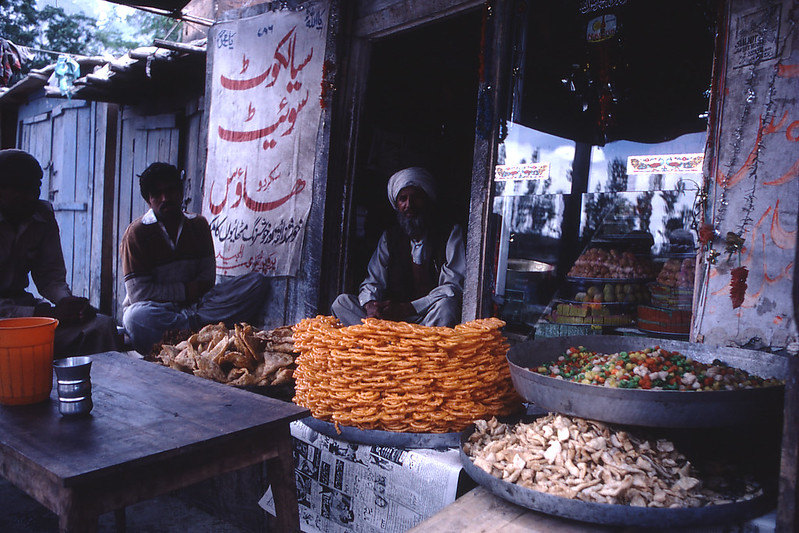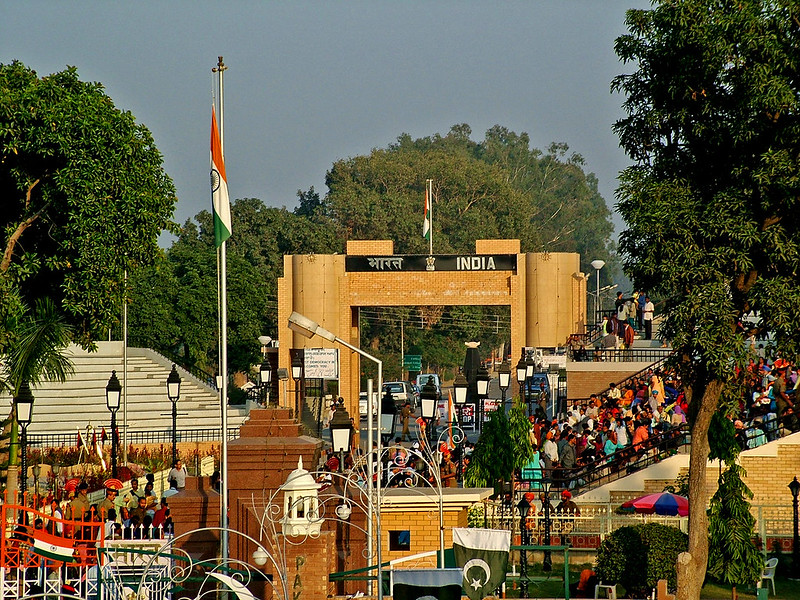
At a recent press conference, Pakistan’s Foreign Minister Ishaq Dar discussed “seriously examining” the question of resuming trade with India, highlighting the eagerness of the struggling Pakistani business community. His statement also sparked optimism among the Indian business community. This points to a potential revival of trade relations between the two countries, including trade across the Line of Control (LoC), suspended five years ago, on April 18, 2019.
Cross-LoC trade is one of the key Confidence Building Measures (CBMs) between India and Pakistan – measures designed to create an environment conducive to the peaceful resolution of bilateral conflicts. Research indicates that such CBMs have proven effective in enhancing peace negotiations and mediation efforts. Resuming trade would not only stabilize the border economies on both sides but could also contribute toward normalizing bilateral ties, avoiding escalation of conflict, and re-establishing this unique CBM in the Kashmir region.
Cross-LoC trade is one of the key Confidence Building Measures (CBMs) between India and Pakistan – measures designed to create an environment conducive to the peaceful resolution of bilateral conflicts.
Economic Impacts and Social Interdependencies
Cross-LoC trade has had a long and unique history following the establishment of a ceasefire between India and Pakistan in 2003. Following the Composite Dialogue, the two countries established two CBMs: cross-LoC travel, officially inaugurated in 2005, and cross-LoC trade, which commenced in 2008 via two trade routes, Srinagar–Muzaffarabad in Kashmir and Poonch–Rawalakot in Jammu. Trade followed a barter system, with goods exchanged for goods. There were no financial transactions, and barter based on the value of goods traded-in and goods traded-out was balanced every three months. India and Pakistan agreed on 21 tradable items, like fruits, vegetables, carpets, medicinal herbs, and dry fruits. Despite intermittent suspensions and ceasefire breaches, both cross-LoC travel and trade endured for over ten years.
Cross-LoC trade played a crucial role in enhancing connectivity for the otherwise distant and secluded border regions of the Poonch and Baramulla districts. It linked them to Pakistan across the LoC while connecting them to neighboring districts in India, such as Jammu and Srinagar. For example, approximately 25,000 people on the Indian side directly engaged in daily trade across the LoC, weaving a web of social and economic interdependencies across the border.
Cross-LoC trade amounted to a value of USD $1.2 billion between 2008 and 2019, as a result of which laborers in the border regions of Jammu and Kashmir (J&K) earned USD $12 million. The exchange of 111,113 trucks generated approximately USD $9 million in freight revenue for transporters in J&K as well.
The influence of cross-LOC trade also extends beyond mere quantitative measures. With the introduction of trade and travel, the LoC witnessed a promising outlook characterized by mutual trust and people-to-people connections. On October 21, 2008, when the inaugural truck from Pakistan to India arrived at Uri, it was welcomed with a sign, “From home to home, we extend a very warm welcome to our Kashmiri brethren.” This underscores the interconnectedness between people on both sides. Over the years, narratives of flourishing enterprises and reunited families transformed bilateral relations across the LoC.
On April 18, 2019, the Indian Ministry of Home Affairs announced the suspension of cross-LoC trade via its two trade facilitation centers in J&K, citing concerns about Pakistan-based elements illegally importing weapons, narcotics, and currency into India. In addition, the Indian government was reportedly concerned about under-invoicing and the exchange of third-country items to take advantage of the zero-tariff barter arrangement of LoC trade.
Local businesses in the border region, including shops, restaurants, and mechanics, were negatively impacted by the trade suspension. An entire network of stakeholders relied on this trade and transit for their livelihoods, and a ripple effect has led to hardships at the local level. For example, a laborer in Uri struggled to afford diabetes treatment for his sister, which was affordable when trade was at its peak. Another laborer, a father of six, had to push one of his sons to quit his studies and work in a hotel to support the family.

Need for Reform
Despite its transformative potential, cross-LoC trade grappled with several challenges, including inadequate infrastructure, the absence of full-body truck scanners, the lack of formal communication channels between the two sides, and frequent internet shutdowns. Furthermore, the product categories list of just 21 items that are allowed for trade, limited the scope of trade between the two sides.
Potentially reviving cross-LOC trade presents opportunities for reform. To develop cross-LoC trade into a robust conduit for economic growth and reconciliation, the Ministry of Home Affairs in India (MHA) and the Travel and Trade Authority in Pakistan can consider several reforms in areas such as infrastructure, digitization, revisions of standard operating procedures, and inclusive expansion.
In terms of infrastructure, the Trade Facilitation Centres on both sides require reforms to increase their security and transparency. Full-body truck scanners, X-ray machines, and CCTV cameras will help prevent the flow of banned trade items and enable faster and more secure trade. To further enhance security, digital platforms can help monitor invoicing, traders’ records, barter balancing, and truck information and enable the authorities to conduct checks in real time.
The Standard Operating Procedure (SOP) under which cross-LoC trade operates was drafted in 2008 and contained clauses regarding the modalities of trade, the documentation of exchanges conducted, the authorities in charge of security, and the inspection and entry/exit of the trucks through trade facilitation centers. The SOP needs revision. For instance, there is uncertainty about the guidelines around rules of origin among the business community. To promote intra-Kashmir employment generation, the MHA and the Travel and Trade Authority in Pakistan could clarify in the SOP that cross-LoC trade is “trade through J&K” such that goods of Indian and Pakistani origin (but not those of a third country) can be traded across the LoC. This would offer an opportunity for locals to add value to the goods coming from outside J&K, offer employment to laborers and transporters involved in the trade, and prevent misuse by traders outside J&K sending their goods across the LoC to avoid the duty that would have been levied if traded through Wagah border, the authorized point for international trade.
The present commodity list of 21 product categories should be replaced with a mutually agreed list of items based on the Harmonized System (HS)-Code, an internationally standardized system of names and numbers to classify traded products. This should address the issue of misinterpretation and misrepresentation of commodities. Furthermore, a formal announcement of INR-PKR conversion rates by the TFCs every 15 days will reduce room to use currency conversion to over- or under-invoice and thus enhance transparency.
Lastly, cross-LoC trade between 2008 and 2019 saw minimal participation of women traders. India and Pakistan should institute safety and security procedures and incorporate a list of items whose trade is economically advantageous to women to build a trade ecosystem conducive to women’s participation, which according to research, will help increase the sustainability, fairness, and transparency of trade.
India and Pakistan should institute safety and security procedures and incorporate a list of items whose trade is economically advantageous to women to build a trade ecosystem conducive to women’s participation…
Conclusion
The suspension of cross-LoC trade underscores the fragility of peace-building endeavors in conflict-ridden regions, specifically the J&K region between India and Pakistan that has remained marred by conflict. With Pakistan signaling its openness to resuming trade, India has an opportunity to work with Pakistan to revive cross-LoC trade in a more robust and systematic manner by instituting structural reforms and revising its SOPs. Right political inclination on both sides could bolster the economies along the border, which are dependent on trade for prosperity. Overall, while cross-LoC trade alone may not guarantee peace between India and Pakistan, it can serve as a constructive mechanism for building confidence, fostering dialogue, and laying the groundwork for broader peace-building initiatives.
Also Read: Institutionalizing Nuclear Confidence Building Measures between India and Pakistan
***
Image 1: Kashmiri shopkeeper via Ole Holbech on Flickr
Image 2: Indian side of the Wagah border via Guilhem Vellut on Flickr


